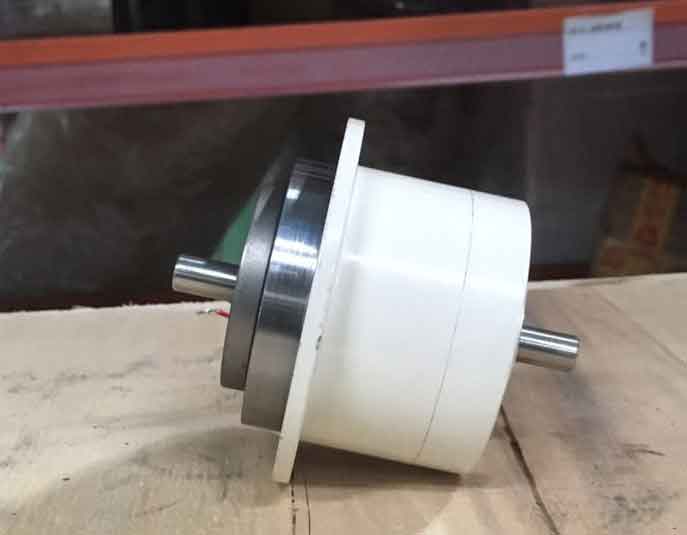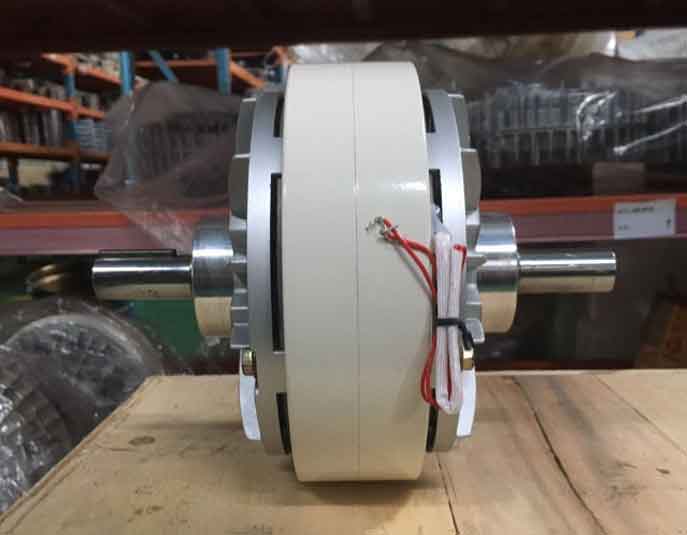Magnetic particle brakes are versatile and efficient devices used in various industrial applications for torque and speed control. These brakes offer precise control, making them indispensable in numerous industries. This article delves into the applications and maintenance of magnetic particle brakes, exploring their use in diverse settings and the key steps for keeping them in optimal working condition.
Magnetic particle brakes operate on the principle of generating resistance through the controlled engagement of magnetic particles within the braking system. The strength of the magnetic field and the number of particles engaged determine the level of torque control. Magnetic particle brakes are favored for their reliability, accuracy, and consistent performance.
Top 5 Applications Of Magnetic Particle Brakes
Industrial Machinery
Magnetic particle brakes are widely used in various industrial machinery applications where precise torque control is essential. This includes:
- Textile Machinery: They control tension in weaving, spinning, and winding processes, ensuring high-quality fabric production.
- Paper and Printing Machines: Magnetic particle brakes maintain precise tension during printing and paper processing, preventing damage and maintaining print quality.
Automotive Testing
Magnetic particle brakes play a crucial role in automotive testing equipment, such as dynamometers and chassis dynos. These brakes are used to simulate different road conditions and load levels, providing precise control for testing vehicle performance.
Packaging Machinery
In the packaging industry, magnetic particle brakes are used in filling, capping, labeling, and other machinery to control the rotation and movement of packaging materials. This ensures accurate and consistent packaging.
Wire and Cable Manufacturing
Magnetic particle brakes are integral in wire and cable manufacturing for maintaining tension during winding and unwinding processes. This is critical to ensuring uniform cable quality.
Tension Control
Magnetic particle brakes are used for tension control in various web handling applications, such as film, foil, and fabric processing. They help prevent material breakage and ensure smooth processing.

Top 6 Maintenance Of Magnetic Particle Brakes
Maintaining magnetic particle brakes is essential to ensure their longevity and optimal performance. Here are key maintenance steps:
Regular Inspections
- Visual Inspections: Regularly examine the brake for signs of wear, damage, or contamination. Check for loose connections or components.
- Check Wiring: Inspect the wiring and connections to ensure they are secure and free from damage.
Lubrication
Some magnetic particle brakes may require lubrication, depending on the manufacturer’s recommendations. Ensure that the lubrication is performed at the specified intervals to prevent wear and friction.
Cleaning
- Keep the Brake Clean: Ensure that the brake remains clean and free from contaminants, such as dust or oil. Clean the brake housing as needed.
- Replace Contaminated Parts: If the magnetic particles become contaminated, they may lose their effectiveness. In such cases, the particles may need replacement.
Adjustment
Magnetic particle brakes often allow for torque adjustment. Follow the manufacturer’s guidelines to make any necessary adjustments to suit your application requirements.
Temperature Control
Monitor the operating temperature of the magnetic particle brake. Excessive heat can reduce its efficiency and lifespan. Ensure that the brake remains within the recommended temperature range.
Consult Manufacturer Guidelines
Always refer to the manufacturer’s maintenance guidelines and recommendations. Manufacturers may have specific procedures and maintenance schedules to follow.
| Maintenance Step | Description |
|---|---|
| Visual Inspections | Regularly inspect for wear, damage, and loose components. |
| Wiring Check | Examine wiring and connections for security and integrity. |
| Lubrication | Lubricate the brake if required, following manufacturer guidelines. |
| Cleaning | Keep the brake clean and replace contaminated particles. |
| Adjustment | Adjust the brake’s torque settings as needed. |
| Temperature Control | Monitor and control the operating temperature of the brake. |
| Consult Manufacturer | Always refer to the manufacturer’s maintenance guidelines. |
Conclusion
Magnetic particle brakes are crucial components in a wide range of industrial applications, from automotive testing to textile and packaging machinery. Their ability to provide precise torque control ensures the quality and efficiency of processes. To maintain their performance and longevity, regular maintenance is essential. By following recommended maintenance steps and manufacturer guidelines, you can keep your magnetic particle brakes in top working condition and optimize their role in your industrial operations.
